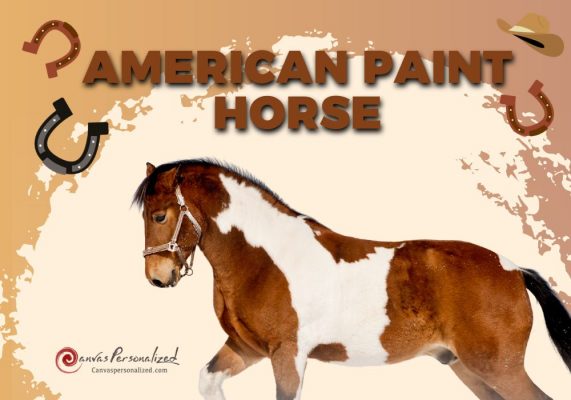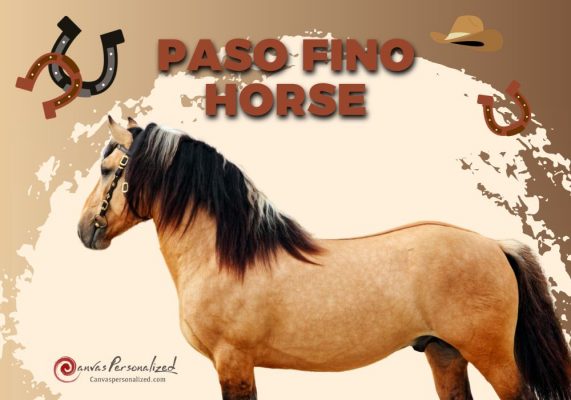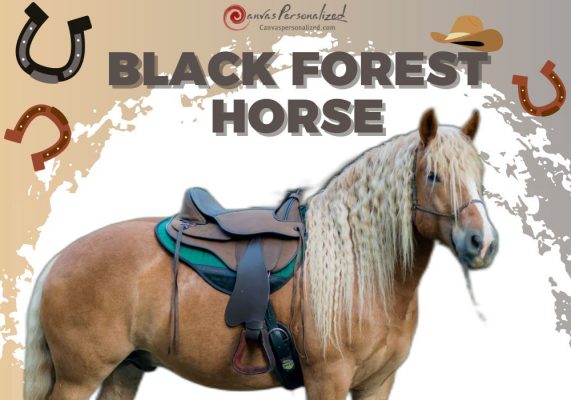Groundwork is a set of exercises while leading your horse on the ground. So that you can prepare your horse training checklist, Canvas Personalized Blog‘ll describe 3 different groundwork exercises for horses and explain each!
Why Are Horse Groundwork Exercises Essential?
Groundwork is a great way to build trust between you and your horse. It helps set limits by giving instructions through a series of exercises and gets the two people to know each other better. Groundwork is also good for horses that can’t be ridden because it keeps them busy while they learn and keeps them from getting bored from being unable to ride.
Horses are herd animals, so they naturally follow the leader. Training begins with groundwork exercises, which benefit the horse and the rider. Being on the ground with your horse allows you to observe its behavior and gauge its mood or temperament before you mount it. Putting in the groundwork is the first step in establishing discipline and reliability.
3 Best Groundwork Exercises for Horses
1. Train Your Horse To Stand Still
The benefits and goals of the exercise
This exercise aims to strengthen your position as the leader in your horse’s mind. If your horse does not regard you as the leader, they will attempt to take that position from you. This can show up in many unexpected ways that even a horse person with a lot of experience can miss.

Teaching a horse to stand still is an important part of training it. Most horses try to wander and move around, which often scares and hurts them. Because of this, training them is crucial.
Also, it can be hard for people to groom or saddle their horses if the horse keeps moving around while they are doing so. A horse should be trained to stay still when tethered, on a lead line, and the ground.
You can train your horse to ground tie with little time and effort. Ground tying is an important skill for horses means you won’t have to keep an eye on them all the time to ensure they don’t get away. Your horse will be much easier to train to stand still after they have learned to yield to pressure.
Steps of this exercise
- Keep your distance from your horse so that you can grasp the lead rope’s end in one hand. If your horse ever tries coming closer to you, you may teach it to back up by swaying the lead line from side to side.
- If they don’t move back right away, shake them harder until they move away. As soon as they move away, let up on the pressure. Once your horse has stood still for a while, ask it to walk towards you for a certain number of steps.
- Then ask it to stop by moving the rope slightly from side to side and holding your other hand up in a stop sign.
- If they don’t stop, keep putting pressure on them to get them to move back. Once they can do this every time, you may combine your hand gesture with a vocal indication.
For horses that move around a lot, it can take a while for them to learn how to stand still, so be patient! Consistency and repetition are the keys to success.
2. Train Your Horse to Flex and Soften to Pressure
Purpose of the exercise
Particularly helpful for horses that struggle to accept the pressure of the bit or reins while ridden, this groundwork practice focuses on teaching the horse to relax under pressure.
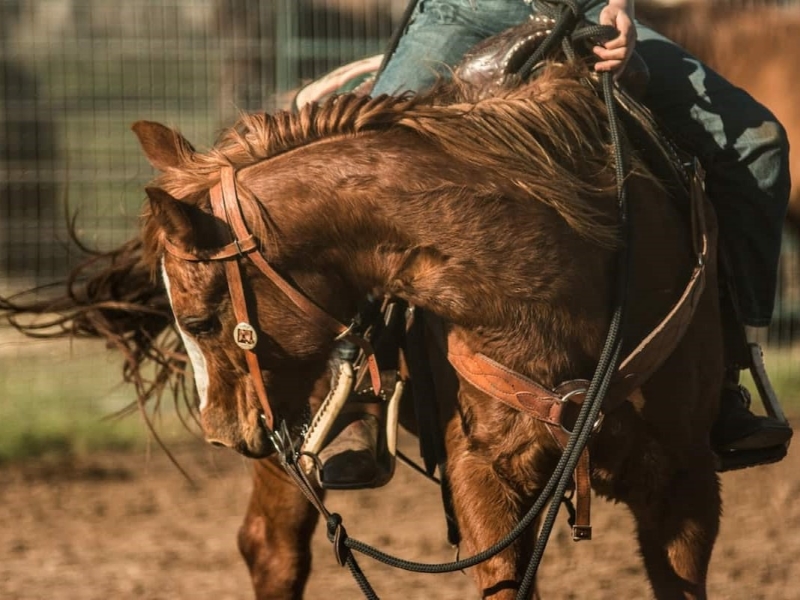
Your horse’s gait may be improved, and their acceptance of the bit facilitated by teaching them to flex and soften in response to pressure. Horses which have never been trained to respond to the reins or the bit are not only difficult to ride, but also fail to carry themselves properly. Bracing against the contact of the reins causes the horse’s neck to invert or stick out in the air, and the horse’s back to hollow down.
A well-trained horse will respond to the contact of the reins by becoming soft and flowy. They are going to be simple to control and maneuver.
Technique
How to teach your horse flex
- Training your horse to flex is the first stage in preparing it to respond to pressure. The first step is to face your horse’s side while standing next to him.
- Then, take the end of the lead rope that is closest to your horse’s face and pull it up to just behind its withers. This makes the horse turn its nose to the side.
- If the horse resists, hold the rope at its withers until you feel it yield or turn its nose in the desired direction. When they do that, let up on the reins, praise your horse, or give it a treat.
- The goal is to be able to ask the horse to point its nose up and bend its neck enough to touch its shoulder. When the horse puts pressure on you, you must let go and reward them. They’ll quickly see that following what you want is a smart option.
Pro tip: Your horse could take a few tentative steps as they try to find its footing when you first begin this exercise. If they do this, move with the horse while holding the lead rope to its withers and asking it to give with its nose.
How to teach your horse to softens
- Use one hand to touch their poll and the other to touch under their chin.
- You should begin pulling down on the rope and gently pushing down on the top of their head. Your horse will likely react defensively at first, raising its head and maybe taking off in the opposite direction.
- If that’s the case, try putting pressure on the lead rope first instead of putting your hand on their head.
- Once again! If the horse resists, you must maintain pressure until it lowers its head.
- Immediately after they achieve it, you should let up on the pressure and give them a reward. Soon, you’ll be able to simply pull on the rope to command your horse to lower its head.
When you do all these exercises together, your horse will learn to follow the interaction when being ridden. Your horse’s neck will flex under the slightest pressure sooner or later. s soon as you pick up the cheekpiece of the halter, their neck muscles will automatically turn and round.
3. Teach Your Horse to Lead Properly
The benefits and goals of the exercise
This exercise aims to get your horse to pay attention to you and your body language. A horse’s mind is easily distracted. And you can usually tell by the horse tugging at the leash, trying to look at something, or by the horse trying to pass you.
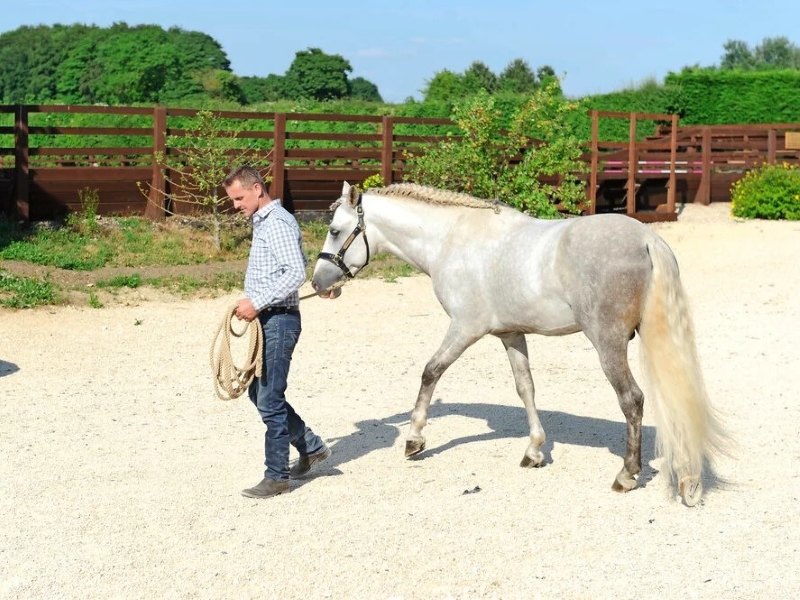
A well-trained horse won’t pull on the lead or make you drag it. They should do all it takes to maintain a position parallel to your arm, even if you increase your pace. And when you stop, they should stop immediately next to you without crossing the line.
Steps of this exercise
- To perform this exercise, you must walk a circle with your horse. Both hands should be on the lead rope, but the one closer to the throat latch should be slightly higher.
- Hold the lunge whip in your free hand as well. The whip is only used on lazy horses that refuse to move forward when asked.
- You aren’t going to use it to smack them. Instead, if they are stubborn, you will hit the ground next to them and tell them to hurry up.
Keep in mind: This exercise’s success will depend on your horse’s temperament.
- If you’re working with a sluggish horse, try changing the pace frequently When you quicken your pace, they ought to follow suit.
- If they don’t, you can use the whip lying on the ground next to them to tell them to move forward. When you go slower, they should too.
- With the changes, they will keep their attention on what you’re requesting. Once you can make pace changes while letting the lead line slack instead of pulling, your horse has earned some praise.
Being patient, confident, and calm will go a long way toward making a good time for both of you. Take a break from the exercise if your horse starts to feel uneasy or uncomfortable!
Go back to a time when it was enjoying training and were calmer, and then move on from there. Groundwork exercises for horses are the key to getting your big pet to respect you and open up to new things.




